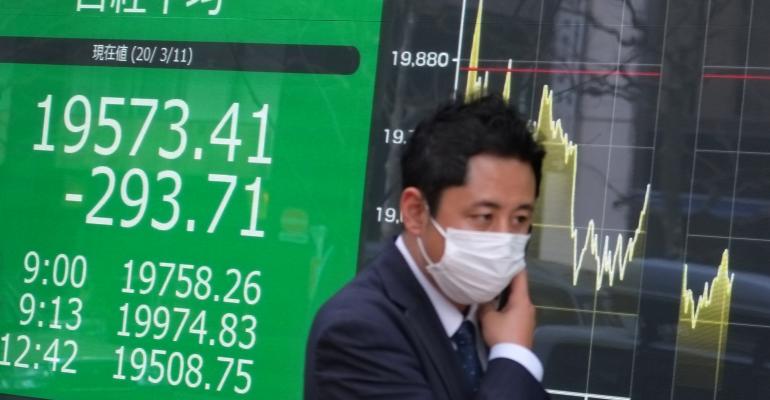The spread of COVID-19, volatile financial markets, new historical lows for U.S. bond yields and a rare intermeeting rate cut by the Federal Reserve made for a highly unusual backdrop for PIMCO’s quarterly Cyclical Forum in early March.
With uncertainty about whether and when the spread of the coronavirus can be contained, risks and disruptions to human lives now in many nations, central banks and governments in motion, and markets volatile, our discussions in the Investment Committee and in our regional portfolio committees will continue in the coming days and weeks. As usual, we plan to publish our quarterly Cyclical Outlook later this month.
However, because so much has changed since we published our last Cyclical Outlook in early January, here is an interim update of our macro views based on discussions to date.
New Neutral 2.0?
For starters, the rapidly deteriorating economic outlook, the recent sell-off in risk assets, and the rally in rates in response to the spread of the coronavirus serve to underscore our secular “Dealing With Disruption” theme and reinforce our long-standing New Neutral framework of very low ranges for risk-free rates. In fact, we may have entered the New Neutral 2.0, where secular disruptors such as the U.S.–China conflict, populism, technology, and demographics interact with black swans like the coronavirus outbreak to increase the demand for safe assets, thereby pushing the neutral rate of interest, plus the entire term structure of market rates, lower and lower.
Turning to the cyclical outlook, the global economy is now back in the “Window of Weakness” (the title of our September 2019 Cyclical Outlook) – which it was about to exit just when the virus hit. In our view, the worst for the economy is still to come over the next several months.
First, China’s recent manufacturing and demand slump will likely affect activity in the rest of the world with a time lag of several months. Second, demand for services (travel, tourism, trade fairs, entertainment, meals away from home) will almost certainly continue to contract due to containment measures and the fear factor.
Against this backdrop, our current baseline, which assumes that the spread of the virus outside China will peak in the next few months, foresees a U-shaped trajectory for global growth over the next few quarters. However, this “U” may feel initially like an “I” as economic growth drops sharply, then like an “L” as the economy finds a bottom but visibility remains low for some time, before growth inflects higher and the upward turn in the “U” materializes.
Technical recession possible
Importantly, we see a distinct possibility of a technical recession (two consecutive quarters of negative growth) in the U.S. and the euro area during the first half of 2020 followed by a recovery in the second half as output and demand normalize. Japan is very likely already in recession. In the absence of major domestic economic imbalances, the downturn in the advanced economies should be relatively mild and short (still assuming the virus outbreak peaks in the next two months). However, we are concerned about potential cracks in the U.S. credit cycle in an environment of dwindling corporate cash flows, which could lead to a sharp tightening of financial conditions that feeds back into the real economy.
Led by the Fed, central banks are aiming to create a backstop for financial markets by trying to prevent further tightening of financial conditions with correlated (rather than coordinated) action. We expect at least another 50 basis points of rate cuts from the Fed, with a distinct possibility of a return to zero on the policy rate and a resumption of asset purchases.
Many other central banks, including in emerging markets, are likely to ease policy further over the next few weeks and months, with an emphasis on sustaining the flow of credit to the corporate sector. In addition, we expect most governments to put in place further fiscal easing to support demand and help the healing of the economy once the virus subsides.
Investment implications: focus on liquidity and capital preservation
Despite the likely wave of global monetary easing and more fiscal stimulus in the pipeline, we believe this is a time to remain cautious on risk assets and focus on liquidity and capital preservation for three reasons:
- Central banks have less and less ammunition left to fight a more severe economic downturn or drawdown in risk assets.
- The vulnerabilities in the riskier parts of the corporate credit markets that we highlighted in our January Cyclical Outlook are more worrying now, with growth slowing and corporate cash flows at risk. We therefore remain underweight corporate credit despite the recent widening in spreads.
- Globalization may unravel even faster as firms try to reduce the complexity of their global supply chains, and governments may use health concerns to implement further curbs on trade, travel, and migration.
For more on PIMCO’s outlook for markets and how investors can prepare for volatility, please see our “Investing in Uncertain Markets” page.
Joachim Fels is PIMCO’s global economic advisor and a regular contributor to the PIMCO Blog.





